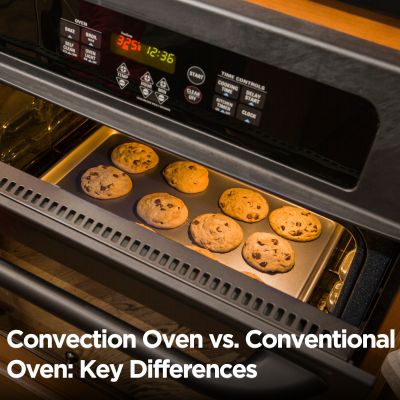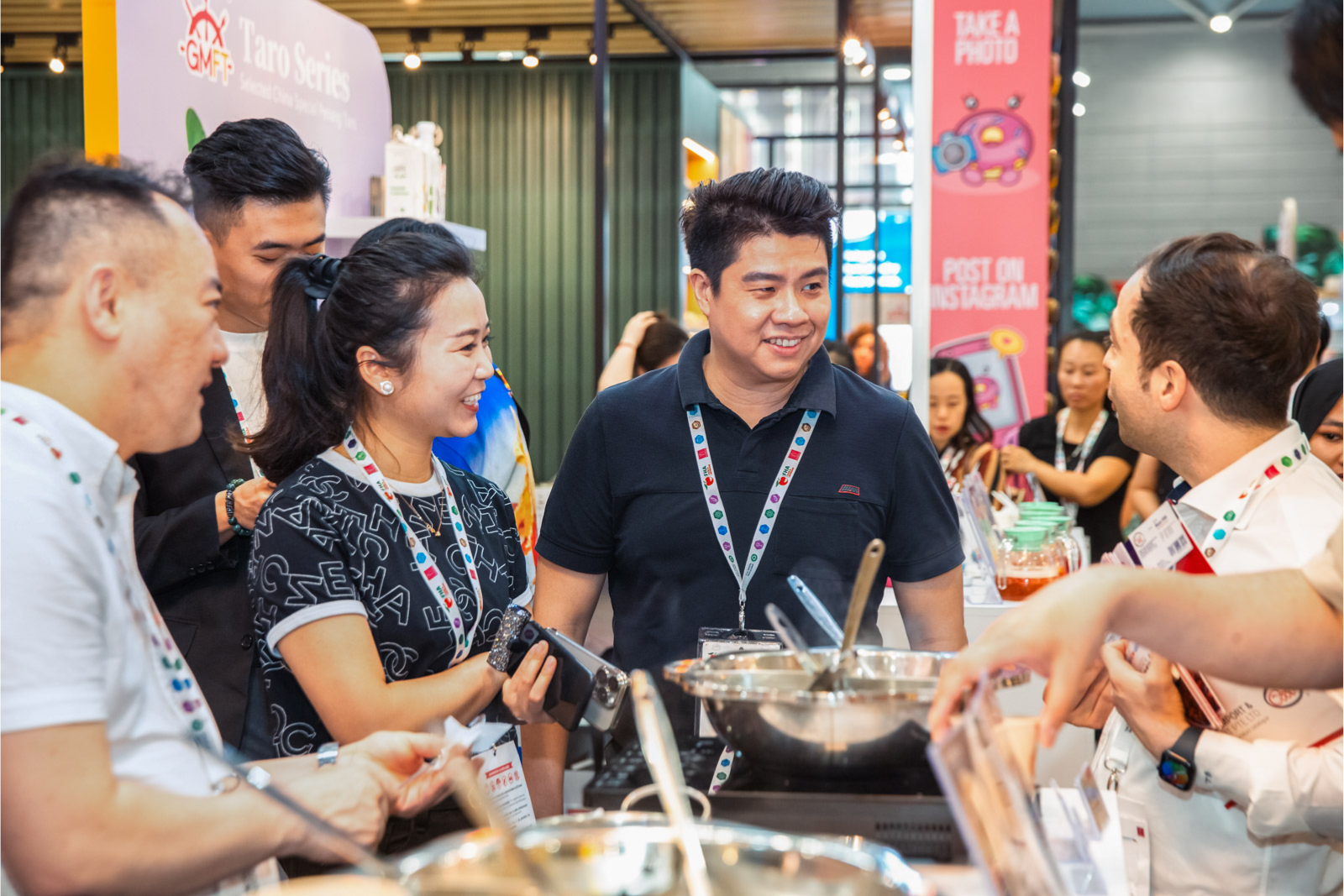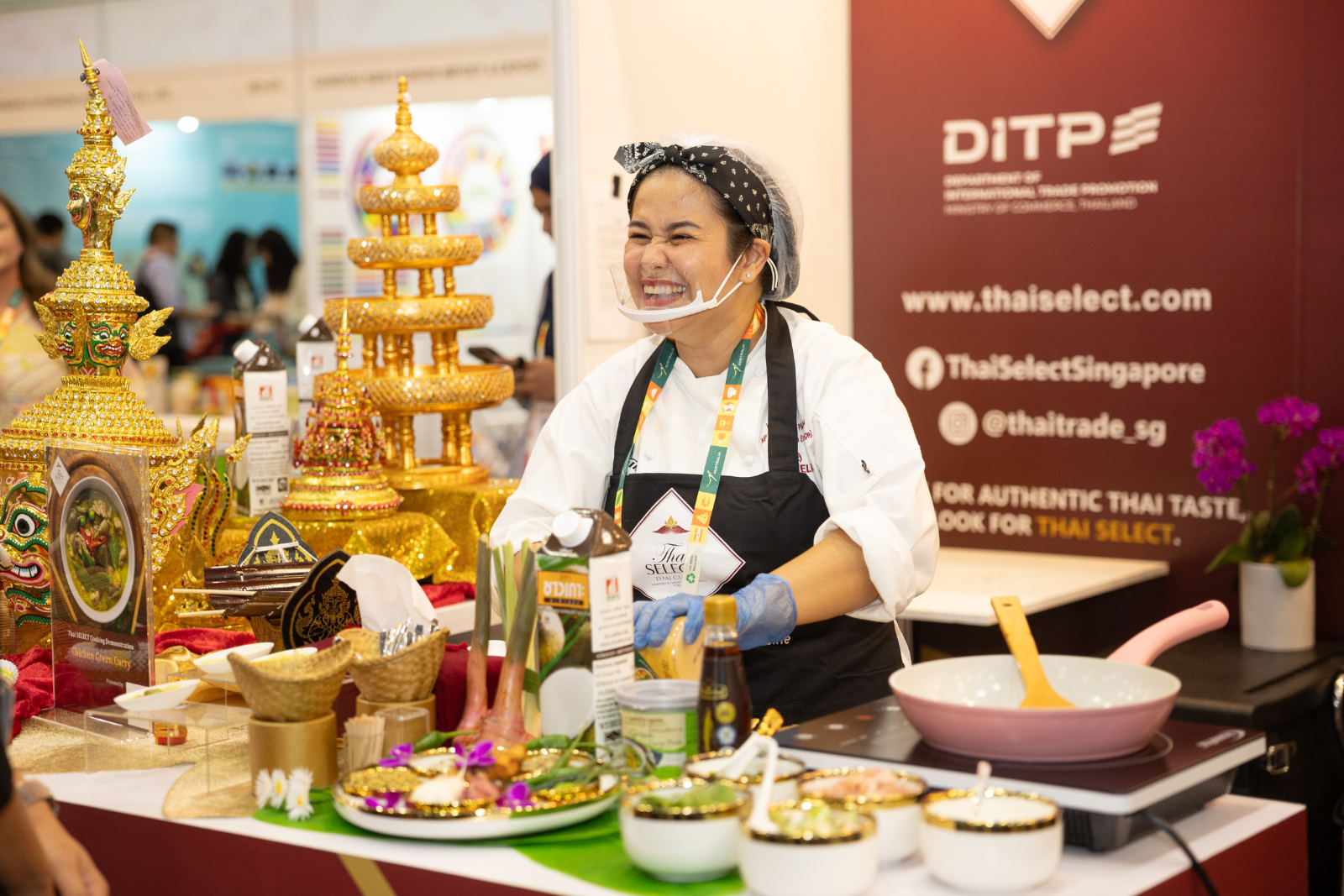If you love cooking or baking, you’ve probably come across the debate: convection oven vs. conventional oven — which one is better? Both are kitchen staples, but they work differently, affecting everything from cooking times to food texture.
Whether you’re upgrading your oven or just curious about the difference, knowing how each type works can help you cook smarter and more efficiently.
In recent years, convection ovens have gained popularity as more home cooks and professional chefs appreciate their ability to cook food faster and more evenly.
In fact, market trends show a steady increase in the adoption of convection ovens due to their efficiency and energy savings.
But does that mean conventional ovens are outdated? Not necessarily! This blog will discuss the main differences, pros and cons, and when to use each.
What is a Conventional Oven?
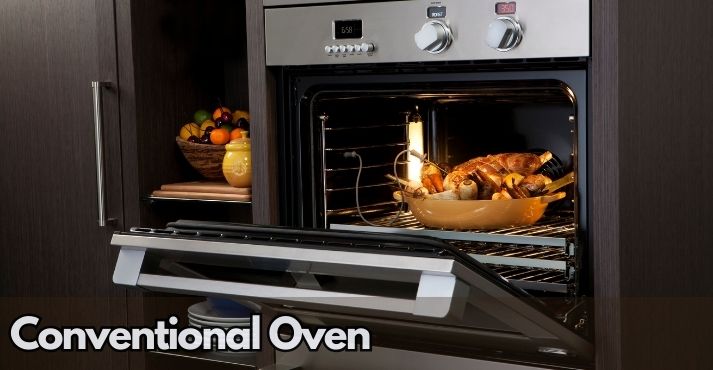
A conventional oven is the traditional type found in most households and commercial kitchens. It cooks food using top and bottom heating elements.
The heat radiates from these elements and gradually warms the air inside the oven, cooking food from the outside. Unlike convection ovens, conventional ovens do not use fans to circulate air, meaning heat distribution depends solely on natural airflow.
Because of this static heat distribution, conventional ovens can develop hot and cold spots, especially if the racks are overcrowded or the oven door is frequently opened.
This uneven heating can sometimes lead to inconsistent baking results, where one side of a dish may cook faster.
Despite these limitations, conventional ovens are ideal for recipes that require a stable and gentle heat environment, such as cakes, soufflés, and delicate pastries.
The lack of air movement helps prevent baked goods from drying out or collapsing, making it the preferred choice for certain types of baking.
What is a Convection Oven?
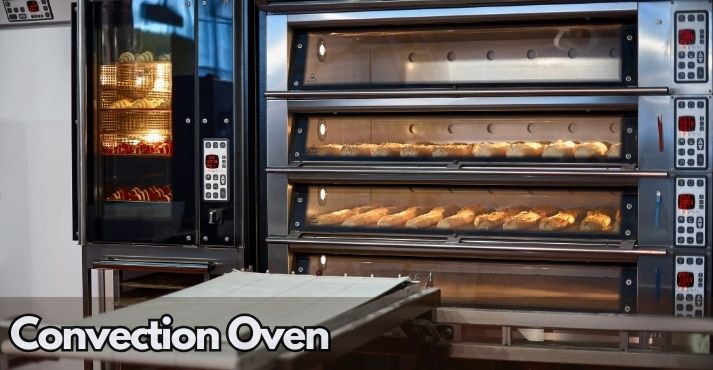
A convection oven is an advanced cooking appliance that improves heat circulation and cooking efficiency.
Unlike conventional ovens, which rely on stationary heating elements, convection ovens use a built-in fan and exhaust system to distribute hot air evenly around the food. This continuous air movement eliminates hot and cold spots, ensuring consistent cooking results.
Because of this even heat distribution, convection ovens cook food faster and more efficiently than conventional ovens. Due to the operational power of the fan, they generally produce 25 to 30 percent more energy, making them more effective at reducing cooking times.
This is beneficial for roasting meats, as it helps achieve a crispy, golden-brown exterior while keeping the inside juicy.
Convection ovens are also excellent for baking pastries like croissants and puff pastry and for cooking multiple trays of food simultaneously without uneven results. Their efficiency and versatility make them a staple in professional kitchens.
Moreover, they are often showcased at Food Service and Hospitality Equipment trade shows, where industry professionals explore the latest innovations in commercial cooking appliances.
Key Differences Between Convection and Conventional Ovens
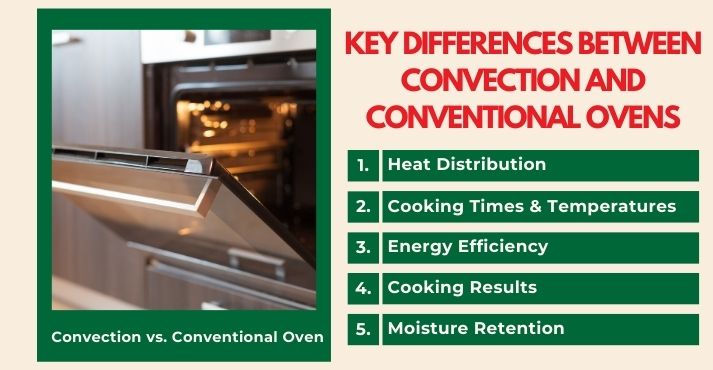
Choosing between a convection oven vs. conventional oven can significantly impact your cooking experience.
While both ovens can handle a variety of recipes, their heating methods, cooking times, and energy efficiency vary. Understanding these differences can help you decide which oven best suits your cooking needs.
Below, we discuss the primary differences between convection and regular oven baking, including cooking times, energy use, and more.
1. Heat Distribution
One of the most significant differences between these ovens is how they distribute heat. Conventional ovens rely on natural heat flow from their top and bottom heating elements.
Because heat rises, the top of the oven tends to be hotter than the bottom, which can lead to uneven cooking. Food on an upper rack may cook faster than food on a lower rack, requiring frequent repositioning for even results.
On the other hand, convection ovens use a built-in fan and exhaust system to circulate hot air continuously throughout the oven. This airflow minimizes temperature fluctuations and eliminates hot and cold spots, ensuring food cooks more evenly.
This makes convection ovens especially useful for baking multiple trays at once or roasting meats where consistent browning is desired.
2. Cooking Times and Temperatures
Cooking with a convection oven is faster and more efficient due to better heat circulation. Because the moving air transfers heat more effectively, food cooks approximately 25% faster than in a conventional oven.
Most recipes suggest reducing the temperature by 25°F when using a convection oven to prevent overcooking.
Meanwhile, conventional ovens take longer to cook food because heat naturally rises, meaning some areas may take longer to reach the desired temperature.
This is why conventional ovens require longer preheating times and sometimes uneven results, especially for larger dishes like casseroles or whole poultry.
3. Energy Efficiency
If energy savings are a priority, a convection oven is the better choice. Although they use a fan, convection ovens are generally more energy-efficient than conventional ovens because they cook faster.
The reduced cooking duration helps compensate for the additional energy used by the fan, making them an overall more efficient appliance.
On the other hand, conventional ovens use more energy because they rely solely on stationary heat, requiring longer baking or roasting times.
This means they consume more electricity or gas over time, especially when cooking large meals that require extended periods in the oven.
Energy efficiency is a primary focus in the future of food service technology, leading many commercial kitchens and food service operations to adopt convection ovens.
These ovens help reduce costs and improve sustainability, making them a smart investment for home cooks and professional chefs. Switching to a convection model can result in noticeable energy savings over time.
4. Cooking Results
A conventional oven is better for delicate baked goods like soufflés, custards, and cheesecakes. The lack of airflow allows these dishes to be set properly without the risk of collapsing or drying out.
Conventional ovens are also great for bread baking, as the stable heat environment helps dough rise evenly without affecting its moisture content.
Whereas, convection ovens enhance browning and crisping, making them ideal for roasting meats, baking pastries, and cooking multiple trays.
The circulating air removes excess moisture, creating a crispy texture that’s especially valuable in food service operations, where efficiency and consistency are essential for high-volume cooking.
5. Moisture Retention
A conventional oven retains more moisture, which is beneficial for dishes that need to stay soft and fluffy, such as cakes, muffins, and quick breads. The absence of constant air movement prevents excess moisture loss, ensuring that baked goods remain tender and moist.
On the other hand, convection ovens create a drier cooking environment, which is ideal for achieving crispy textures in foods like roasted chicken, pizza crusts, and French fries.
The moving air continuously evaporates surface moisture, producing a more golden-brown, crispy finish. So, if you’re debating between a convection oven and a standard oven, consider the texture you want in your final dish.
Pros and Cons of Each Oven Type
When deciding between a conventional vs. convection oven, it’s essential to consider the strengths and drawbacks of each. Conventional ovens are widely used for their simplicity and affordability, making them a reliable choice for home cooks.
Meanwhile, convection ovens provide faster cooking times and even heat distribution, appealing to those who want efficiency in the kitchen.
However, both oven types come with trade-offs, so understanding their pros and cons can help you choose the right one for your cooking needs.
Conventional Ovens
Conventional ovens are popular for their ease of use and cost-effectiveness. They cook food using top and bottom heating elements, creating a stable heat environment ideal for delicate baking.
This gentle heat benefits cakes, soufflés, and custards by preventing them from collapsing or drying out.
Additionally, conventional ovens are widely available and often cheaper than convection models, making them an accessible choice for most households.
However, one of the biggest drawbacks of conventional ovens is their uneven heat distribution. Since they don’t have a fan to circulate hot air, certain areas may cook faster than others, leading to hot and cold spots.
This can result in unevenly baked goods or the frequent rotation of trays. Conventional ovens also tend to have longer cooking times, which means they use more energy than convection ovens. Over time, this can lead to higher electricity or gas consumption.
Convection Ovens
Convection ovens are notable for their ability to cook food more evenly and efficiently. They circulate hot air throughout the oven using a built-in fan and exhaust system, ensuring consistent temperatures across all racks.
This technology reduces cooking times by approximately 25% and enhances browning and crisping, making convection ovens particularly useful for roasting meats, baking pastries, and cooking multiple trays.
Additionally, because they cook food faster, convection ovens are more energy-efficient, saving time and electricity.
Despite these advantages, convection ovens do have some downsides. They are generally more expensive than conventional ovens, making them a larger initial investment.
Many standard recipes are designed for conventional ovens, meaning temperature adjustments and cooking times are often necessary when using a convection oven.
Additionally, the fan-driven airflow can sometimes dry out certain foods, making them less ideal for soft, moist baked goods like cakes or bread.
When to Use Each Oven Type
The type of oven you use depends on the dish you’re preparing. While conventional and convection ovens are versatile, each excels in specific cooking methods.
Conventional ovens provide a stable heat environment, making them ideal for delicate baking, whereas convection ovens offer faster, more even cooking, which benefits roasting and crisping. Understanding when to use each oven can help you achieve the best recipe results.
A conventional oven is best for traditional baking, especially cakes, custards, and breads. These foods require steady, gentle heat to rise properly and develop the right texture. The lack of air circulation prevents excessive drying, helping baked goods stay moist and fluffy.
If you’re baking something with a delicate interior, like muffins or sponge cakes, a conventional oven is the better choice for consistent, even results.
A convection oven, on the other hand, is perfect for roasting meats, baking multiple trays at once, and achieving a crispy texture.
The circulating hot air ensures even browning, making it great for roasting chicken, vegetables, and baked goods like cookies that benefit from consistent heat.
Additionally, if you’re cooking multiple dishes simultaneously, the airflow prevents uneven cooking, making convection ovens a practical choice for busy kitchens.
Conclusion
Both convection and conventional ovens have their strengths, and choosing the right one depends on your cooking style and needs. Conventional ovens provide a stable heat environment, perfect for delicate baked goods like cakes and soufflés.
Convection ovens, on the other hand, cook food more evenly and quickly thanks to fan-driven air circulation. They are ideal for roasting meats, crisping vegetables, and baking multiple trays.
Whether you’re a home baker who loves traditional baking or a busy cook looking for efficiency, each oven has its place in the kitchen. If you’re upgrading or deciding which type to use, consider what dishes you cook most often.
Which oven do you prefer? Share your experience in the comments!

